A few words about the presentation I’ve been able to give over the last few months, and notably at scrumday 2014, with Oana Juncu, my partner at convergenc.es, with whom we had the pleasure of hosting Dan Mezick (above in the photo presenting Open Agile Adoption in Montpellier in September 2013). I’d been wanting to write this article for a while and I didn’t know how to go about it: write a report of my OAAs? I tried, it’s long and complicated; I’ll rather try here to tell you about an Open Agile Adoption, and place feedback here and there from my own experiences.
Open Agile Adoption is now called Openspace Agility
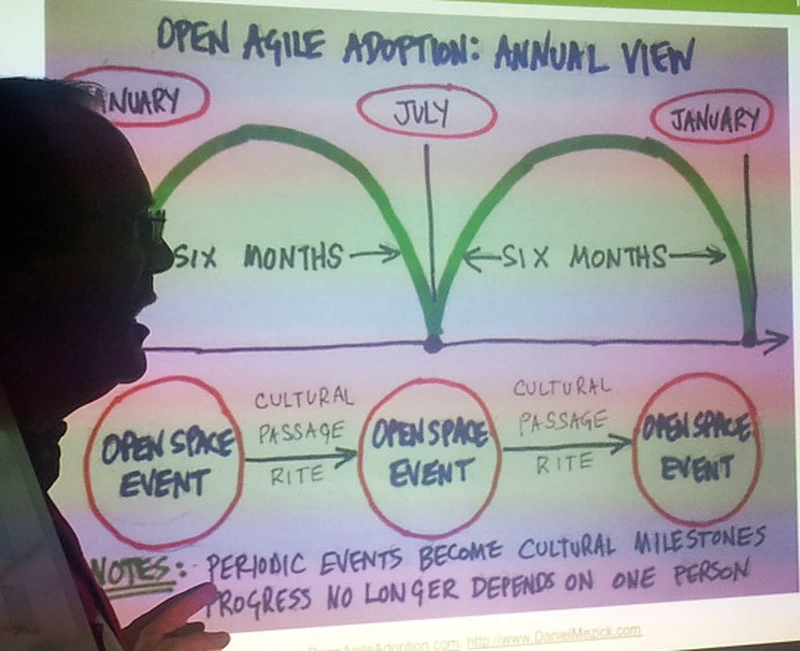
So here’s an Open Agile Adoption based on my stories. Open Agile Adoption being ultimately quite recent, the first official presentations were given in fall 2013…in France (yay) by Dan Mezick.
Presentation slides
Invitation
An Open Agile Adoption starts with an invitation. The idea is to invite people to be the actors of their own change management. So we’re going to invite them. And several times: to come, to propose ideas, to participate in discussion groups, to implement their proposals. But since it’s an invitation they’re not obliged to accept: they can decide not to come, not to have an idea, not to participate in discussion groups (for this we’ll set up a “food & drinks” track), not to implement their proposals. Why? Because any coercive action is counterproductive. It’s illusory to want to change people or organizations without their consent, without their desire. The only sustainable change will happen with everyone’s commitment, and that starts with an invitation.
Small feedback: during the first OAA some people will come see me and say: “you’re kind with your invitation, but if we don’t come it will be noticed”. They’re right. First we need to gain everyone’s trust. They want to see it to believe it. I then advise them to come and pretend, it’s sad but that’s how it is. In any case they’re free.
Theme of the day
The invitation proposes the theme of the Open Agile Adoption day. The subject on which people will focus and propose improvement paths. This theme can be very broad and encompass almost all subjects: “how to get back on the right track?”, or be more precise: “how to improve the service offered by the customer care & support groups for the EMEA entity?”; the theme of the day can mention the product: “what to propose for our new xxx range”, or precisely the culture and practices: “Following Pablo’s presentation of agile, how to implement this culture and these practices at our place?”, etc.
So yes, depending on the theme addressed it’s necessary to prepare people (i.e. send the invitation early enough!): we can quickly have proposals on improving our daily life (because we’re immersed in it), it’s harder for other subjects.
Day launch
The central tool of Open Agile Adoption is Open Space Technology by Harrison Owen. But while this tool is central it doesn’t constitute the definition. It’s indeed the set of points judiciously proposed by Dan Mezick that will make change possible, Dan proposed a set that makes sense. Chronologically then you sent an invitation week S-1 (during a presentation of agile), and you chose the theme: “Following Pablo’s presentation of agile, how to implement this culture and these practices at our place?”. The day starts at 9:00 AM with coffees. When you feel everyone (well those who decided to come) ready, we announce the Open Space rules (the law of 2 feet, the bees, the butterflies, etc.) and the constraints.
The constraints
Open Agile Adoption is not Open Bar. I hope you’ll have as few constraints as possible, but generally they exist. For example, the budget one: “Ladies and gentlemen, I propose implementing your ideas, your suggestions, your proposals. But we will be subject to the constraint of having an equivalent budget. What can we change, improve, with an equivalent budget?” (Teams have for example proposed changing all desktop computers for laptops, for an obvious advantage in their context, the budget constraint was respected because it meant fewer licenses versus purchasing the machines). Generally there’s also (I propose) as a constraint: weak adherence with people and services that aren’t present at the OAA. Otherwise we’ll hear: “if they did…”. “OK, regardless of their faults or qualities, they’re not in the reflection, so among us what could we change?”. A last very classic constraint: all actions proposed following discussions are measurable and achievable.
This way of setting a container (the constraints) and letting people do (self-organization) is typical of agile culture, of emergence, etc. The big bosses who wish to implement an OAA risk nothing (I’ll talk about this more below).
The big boss(es) open
So 9 AM opening, coffee, 9:30 AM: presentation of Open Space rules and constraints. Then we announce the theme: this presentation is carried out by the big boss(es). Well yes, if it’s not the big boss who opens and closes by clearly announcing that they will bring their support to implementing the proposals your day isn’t taken seriously. And even there, we’ll see if they keep their word. I therefore advise big bosses not to do an OAA if they don’t intend to keep their commitment. The effect would be formidable and far more consequential than not doing the day. Trust would be affected for a while.
The marketplace
Comes the moment of the openspace marketplace. It’s generally a matrix (stuck to the wall: sheet of paper, grid tape, etc.) between places, subjects and time slots. If you have 50 people divide by ~50/8 (a group that brainstorms beyond 8 spins its wheels). Let’s say 6 speaking spaces (not too far from each other to facilitate the law of two feet), and adding one more for food and drinks (nobody is obliged to participate), so 7. To this you add 4 time slots: 10:30 AM-11:30 AM, 11:30 AM-12:30 PM, 2:30 PM-3:30 PM, 3:30 PM-4:30 PM: we get 7*4 = 28 speaking spaces.
Generally I launch two marketplaces, or rather I renew it: the first in the morning, the second at the beginning of the afternoon. Subjects that nobody retained are removed from the marketplace (it’s not useful to fill it entirely). If a subject attracts many people: duplicate the groups, replay the session, deepen the subject, everything is allowed.
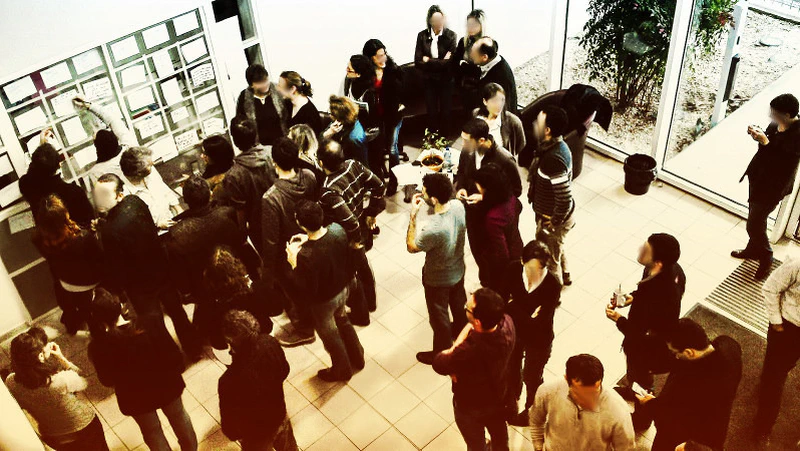
For the marketplace to fill up: the person who proposes a subject steps forward on the platform, announces their subject, places the subject in the cell of the matrix they chose (time+place).
Attention to propose several subjects one must queue again. If the subjects don’t retain attention when people indicate where they’re going, don’t hesitate to quickly clear space on the marketplace. A person wanting to saturate the space can quickly be sent back to their cage. Then you’ll see an openspace marketplace works quite quickly on its own.
Exposing one’s ideas
But yes exposing one’s proposals, one’s ideas, isn’t painless. It’s a great strength of OAA to succeed in clarifying and closing many debates. Indeed to the one who complained about never being listened to, here’s the opportunity to express themselves and implement their proposals. But careful, this submission goes through the support of their comrades who will express their desires to dialogue with them on concrete actions. Then by the fact that implementation is also done by the group (it’s necessary in the OAA preparation to define what are the means allocated to implementation: 5% of time? 1 day per week? per month?). It’s no longer the big bad manager who blocks, but their peers, or themselves: you know people who complain constantly but when they have the means think twice before applying their “ideas”. Yes you’ll be able to hear: “I don’t understand why you always ask for this: why didn’t you propose and implement it in the OAA framework?”. And so a fundamental question arises: if we give you the means, subject to respecting the company’s constraints, to implement what you think is good (and as always you have the right to be wrong, to fail, to change your mind), and you never propose anything, during several OAAs, and you complain all the time. You must either change the constraints, or change companies.
However sometimes, and more than we think, this idea that couldn’t emerge is the right one. Against all odds it works and it changes life.
And even when an idea isn’t perfect, since it was proposed by those who will implement it it will be far more effective.
You have nothing to lose with an OAA.
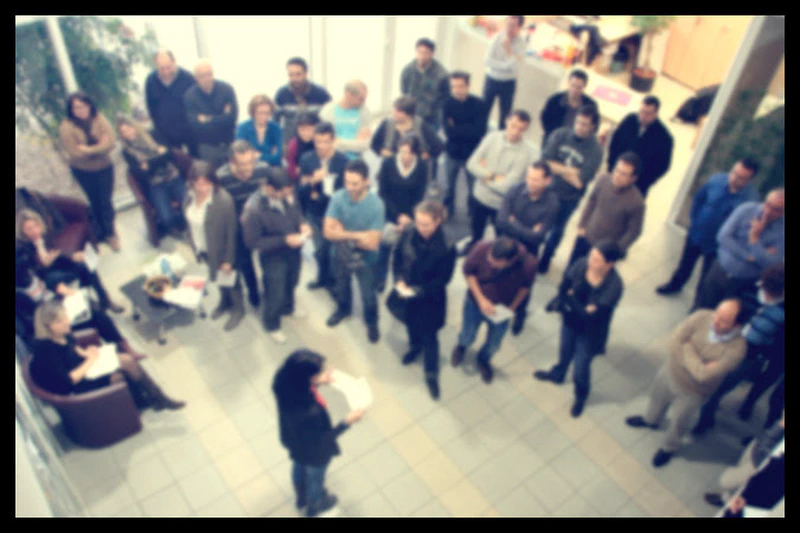
Extroverts and introverts
Also comes a recurring question about extroverts and introverts, but not only: there are also the old-timers and the newcomers, etc. Generally I don’t address this question because I observe it resolves itself by the openspace rules. I don’t deny that there are habits and implied power games but the openspace leaves enough space precisely for this to regulate itself.
The brainstormings
The brainstormings I propose generally last 40 minutes, and we reserve 20 minutes to have public restitutions of ideas. No other rule. The restitution generally lasts between 2 and 3 minutes.
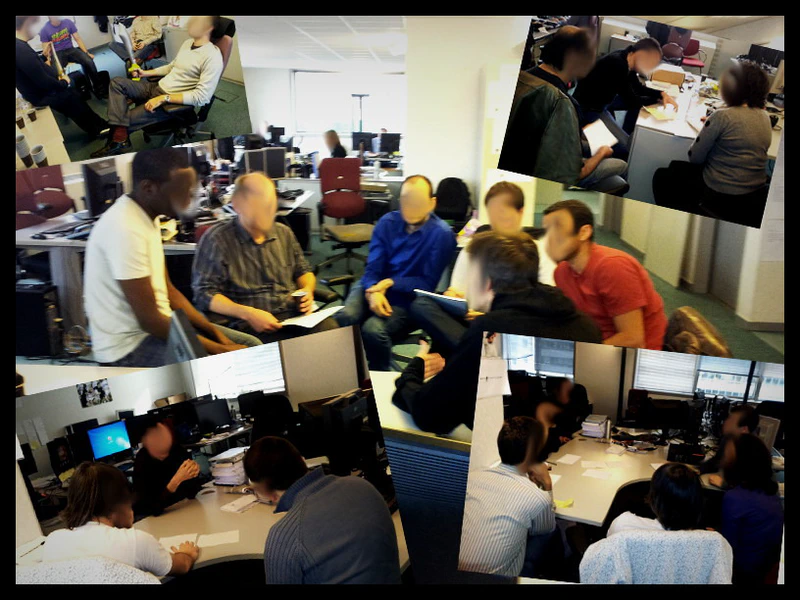
The community pizza
A good idea, often encountered, even systematically, is a community pizza. I’ve also attended a relaxation space between noon & two with Counter Strike (online video game of shootouts). No problem, the day will be very tiring, for those who want (because it’s an invitation and one can stop at any time: once, a whole group of 20 people stopped at the third hour, exhausted: “it’s finished when it’s finished”).
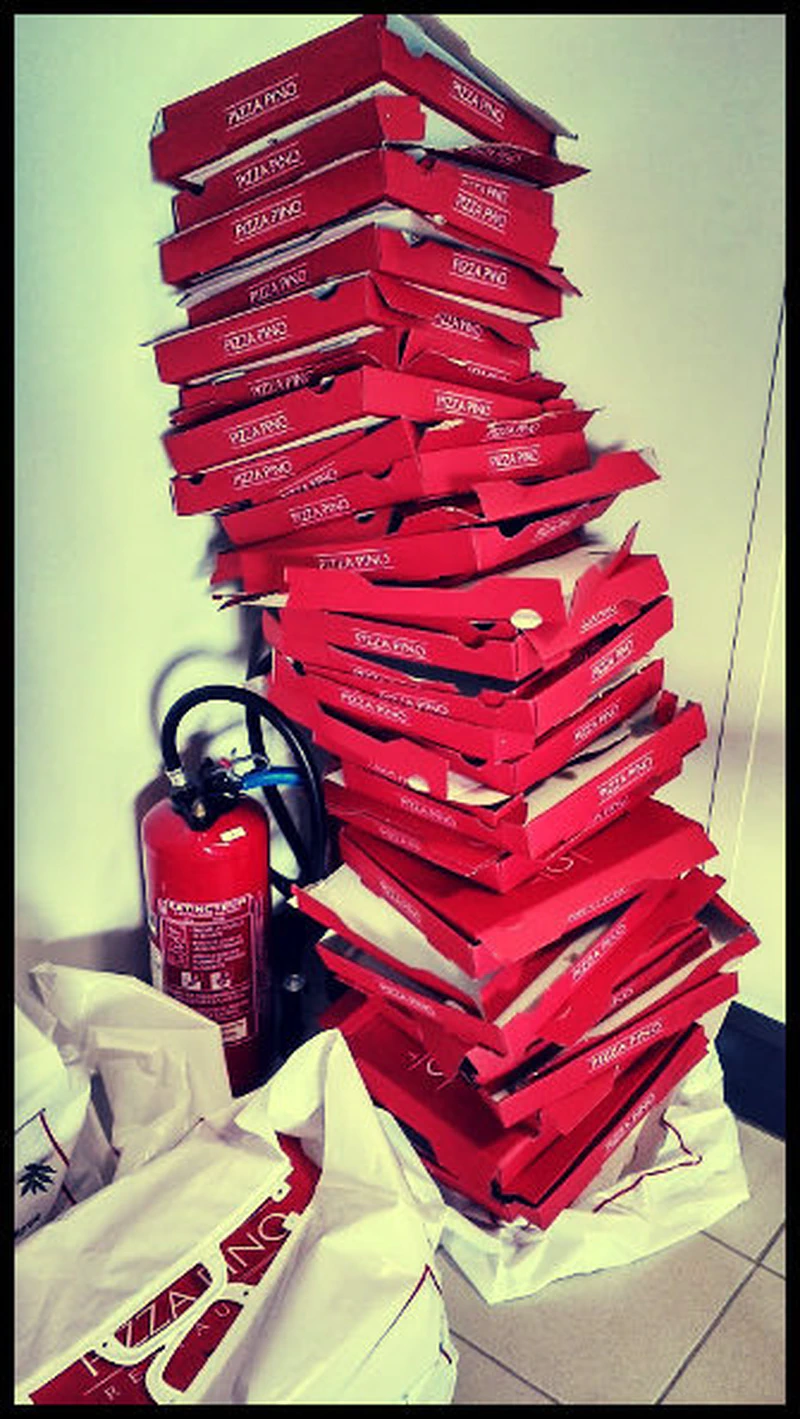
A PDF is concrete
If you’re a facilitator, during the brainstormings you’ll consolidate the returns from previous sessions. We must avoid transforming the event into a one-time speech without follow-up. For this: we’ll consolidate the proposals on the fly (generally I distribute the PDF in the evening, at worst the next day). I’ve gotten used to going fast with markdown + pandoc, or with latex+texmarker. Some people make my task easier by writing on their laptop the result of the debates, otherwise I systematically ask for a handwritten sheet of paper of what emerged from the group.
At the end of the day we celebrate, we applaud ourselves if we think it was good. And we close, like the opening with the big boss(es).
The facilitator(s)
They hold the space: ensure the container is in good condition: clear, with known and respected rules, so that self-organization is liberated.
No risk for the big bosses
No risk for the big bosses because they have the opportunity to cite and place the constraints. All benefits are shared by all participants. Having people who propose things for the company in a well-defined framework can only be experienced as progress for the company.
The only real risk is making people believe you support the initiative. This lie will be paid dearly in terms of trust. Better not to do an OAA than to make people believe in your support during an OAA.
The flow of proposals
For a group of 60 people, for a first OAA, I’ll observe ~200 proposals for measurable and concrete actions. Among these, 150 are imprecations, especially during the first one. We give the floor, and the floor is used to finally say aloud buried things. But they’re not necessarily real actions. Of the 50 remaining, half won’t last the distance: they’ll quickly prove inoperable, inadequate, bad, etc. Of the 25 remaining, even if we implement half it makes a good dozen improvements every 6 months (as we’ll see below, we’ll repeat the event every 6 months as a general rule). A dozen improvements every 6 months, carried by the teams, sustainable, in alignment with the company’s context: hard to do better.
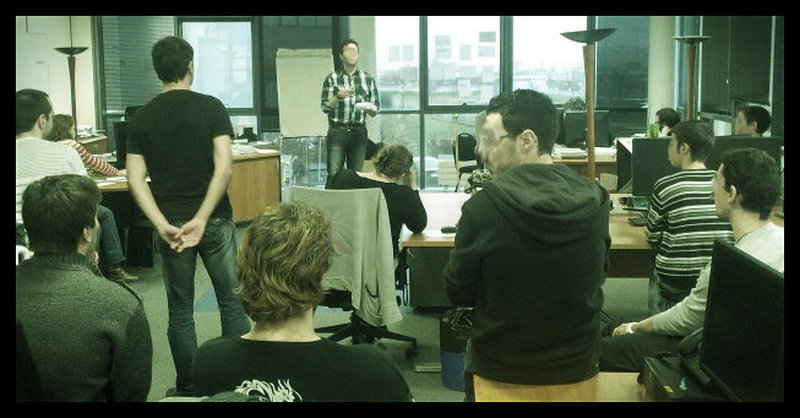
The step back
It never happened, but even if no action was completed this OAA day brings many benefits nonetheless. Putting into perspective everyone’s work is not the least: the day will provoke a questioning about oneself and one’s work tool that will prove very enriching for most. I’ve also been able to observe a liberation of speech and communication in the company.
Flooding the space with stories
The next day it’s a bit of a hangover. Daily life takes over its rights. Yesterday’s excitement seems to have fizzled out. For the manager, the coach, the facilitator or the companion, we must flood the space with stories: what are the emerging successes? what are the actions that started? how did we manage to shape our proposals? What are the good surprises? What are the learnings? etc. Stories are the true indicator of company culture. What do people tell at the café about the company: it’s key! You must be extremely sensitive to it.
Stories are also the pattern most suited to learning. They’re the ones that best convey and crystallize company culture as Oana Juncu says so well.
Action follow-up
No rule, but be present at the story level as mentioned above. If you’re a facilitator or manager, revive interest but don’t take the hand: these aren’t your proposals. You’re there to support. Generally we’ll quickly propose (people, friends, participants) a visual follow-up of Kanban type.
Repeat the event!
As Dan Mezick recalls by making the analogy with rites of passage in African cultures between childhood, adolescence and adulthood (he uses the term liminality), change introduces a feeling of insecurity. It’s identical with OAA. It’s therefore essential that you clearly announce that another OAA will take place in 6 months (and so every 6 months a new step will be taken). This gives a target, it also allows, and this is very important, to know that what we’ll try to implement can be cancelled, questioned. If we can question it, then we can try. The first day is different if we know another will follow. Announce it from the beginning.